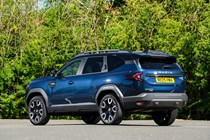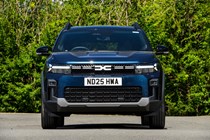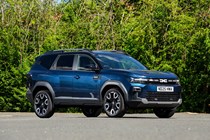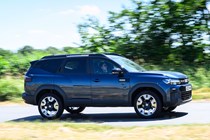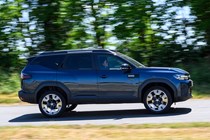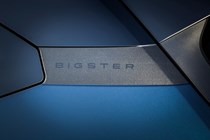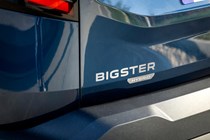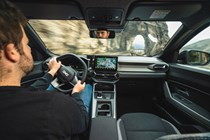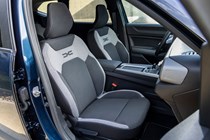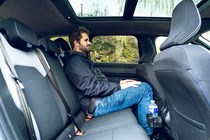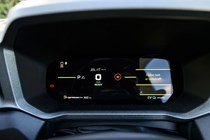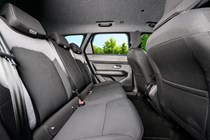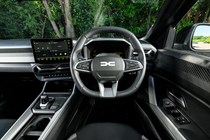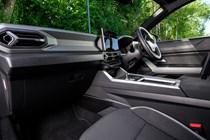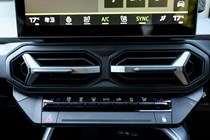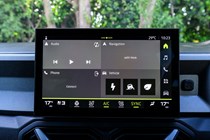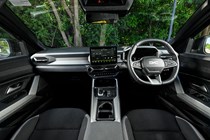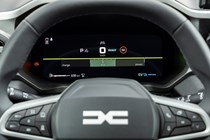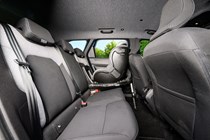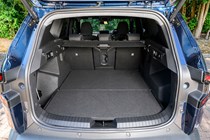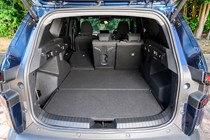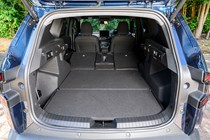Dacia Bigster engines, drive and performance
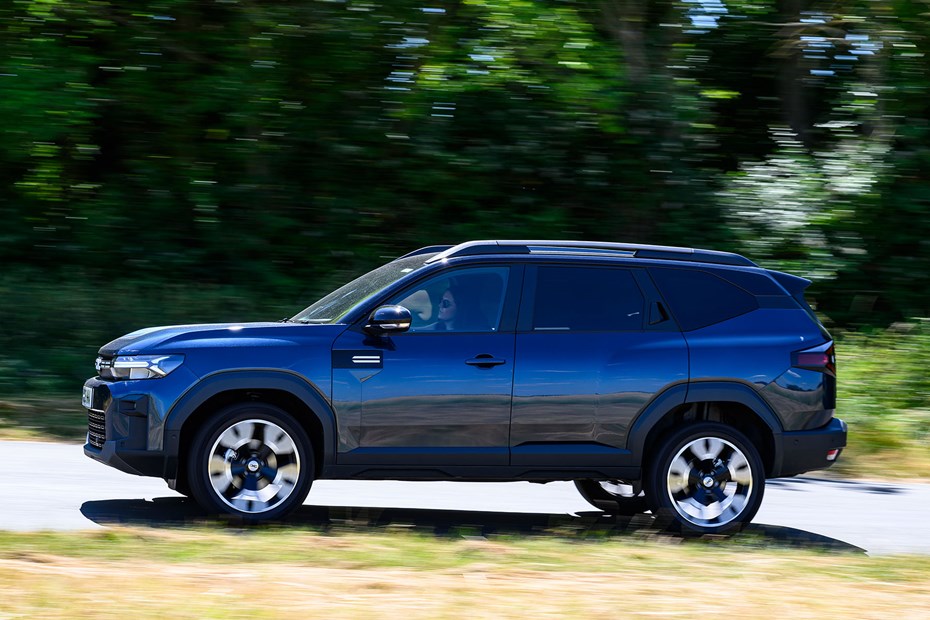
- Petrol mild hybrid keeps price down
- Hybrid system is very efficient
- Four-wheel drive available
Petrol engines
The Dacia Bigster is available with two petrol mild-hybrid powertrains, both based on the same turbocharged 1.2-litre three-cylinder engine. The cheapest option has 140hp and 230Nm of torque, which it sends to the front wheels via a six-speed manual gearbox.
You can have the same engine with four-wheel drive, but it loses 10hp in the process. Another thing worth noting is the 4x4 costs an extra £2,200 over the most basic Bigster – and it’s slower and thirstier. For that reason, we’d only recommend you buy this model if you’re specifically looking for a car you can take off-road.
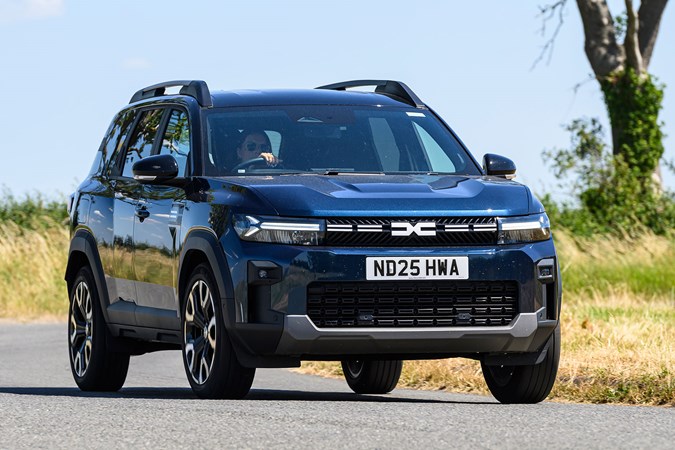
The performance and efficiency figures back this up. The 140hp version can sprint from 0–62mph in 9.8 seconds and returns a claimed 51.4mpg. The 130hp, meanwhile, takes 11.2 seconds to reach 62mph and has an official fuel economy figure of 46.3mpg.
Hybrid engines
This hybrid Bigster is the only model we’ve driven so far. It’s powered by a 1.8-litre self-charging hybrid system that’s not only new to Dacia, but new to the Renault Group as well. That’s a big break from convention. Historically, Dacia has pieced its vehicles together using its parent company’s hand me downs.
The powertrain has a combined output of 155hp, which is 15hp more than you get from the old 1.6-litre hybrid system fitted to the Dacia Jogger. That’s enough to punt the Bigster from 0–62mph in 9.7 seconds. Plus, because it can potter around on electricity alone at speeds up to 40mph, you stand to save a lot of money on fuel.

Dacia says it can deliver more than 60mpg. I managed to average around 50mpg during my time with the car on a mixture of town roads, A-roads and motorways, which is good for a car of this size.
What’s it like to drive?
- Steering is vague and light
- Suspension soaks up most bumps
- Brakes doughy until mid-travel
The Bigster could be good to drive if Dacia had spent slightly more time on calibration. I’ll start with the steering. There’s far too much power assistance and the weight doesn’t build very linearly as you wind on the lock, which makes it quite unpredictable when cornering. I was constantly second-guessing how much steering I needed to exit junctions and round corners.
Dacia could have smoothed out the changeover between friction and regenerative braking, too. The hydraulic brakes don’t engage until you’re about halfway through the pedal travel, at which point they spring into life and rein the car in with a jerk. The hybrid versions of the Nissan Qashqai and Hyundai Tucson have much more progressive brake pedals.
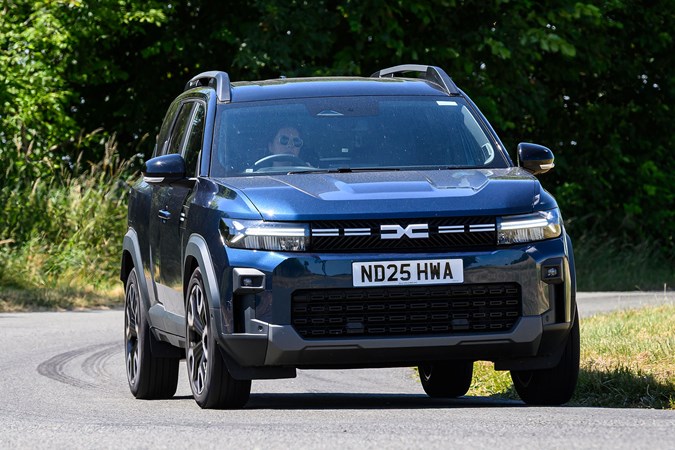
The Bigster’s new hybrid system is quiet, though. Its electric motor is powerful enough to push the car around, which means you barely hear the engine in the city. However, you pay for this low-speed silence once you hit a faster road.
Again, the system needs a little more calibration. I kept catching the powertrain out when pulling up to fast A-road junctions – once I’d slowed from 60mph to a crawl, the system couldn’t decide whether it wanted to run on electric power or combustion power. The engine would shudder to a halt then bark back into life sending unwanted vibrations through the cabin.
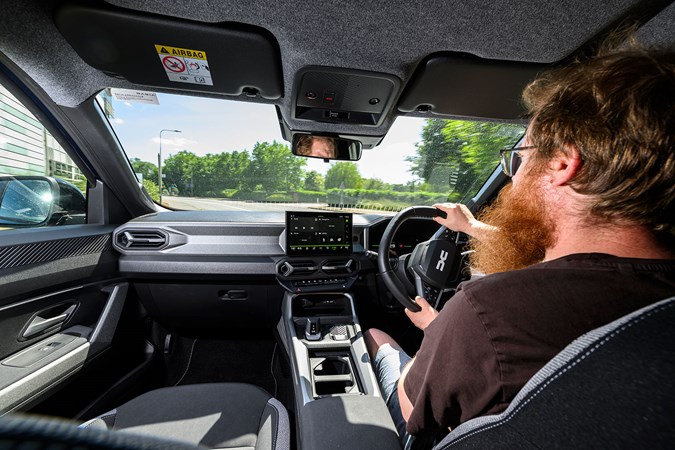
Wind noise is quite noticeable, too, especially on the motorway. But then, that’s to be expected because the Bigster has the same aerodynamic properties as a motorised anvil. What’s equally disappointing is how the lack of sound deadening allows road noise to punch into the footwells. Overall, it’s not quite as refined as the Qashqai or the Tucson, but you need to ask yourself whether the money you’ll save by buying the Bigster can compensate for that.
I’ll get back onto the positives. The hybrid model’s certainly powerful enough. The assistance from the electric motor means you’ve got plenty of low-down grunt – once you’re running in hybrid mode, it feels a bit like diesel to drive – and that means you don’t fret about joining the motorway in the same way you do in a fully-laden base-spec Jogger.
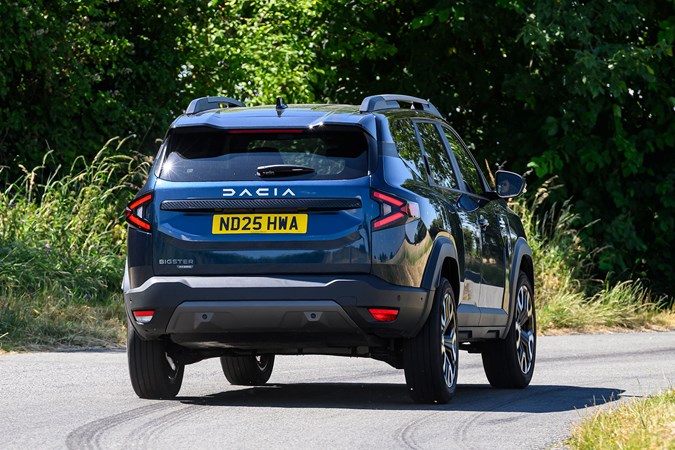
Dacia did a good job on the Bigster’s suspension, too. The ride is a little floaty, which doesn’t exactly inspire confidence if you’re driving quickly. However, it has the benefit of allowing the car to glide over potholes and expansion joints. Only the biggest craters make their way into the cabin, which is impressive considering how cheap it is. I could spend all day on the motorway in it, so I’d say it’s met its brief well.
We’ll update again you once we’ve tried the Bigster’s less powerful 1.2-litre engines.



